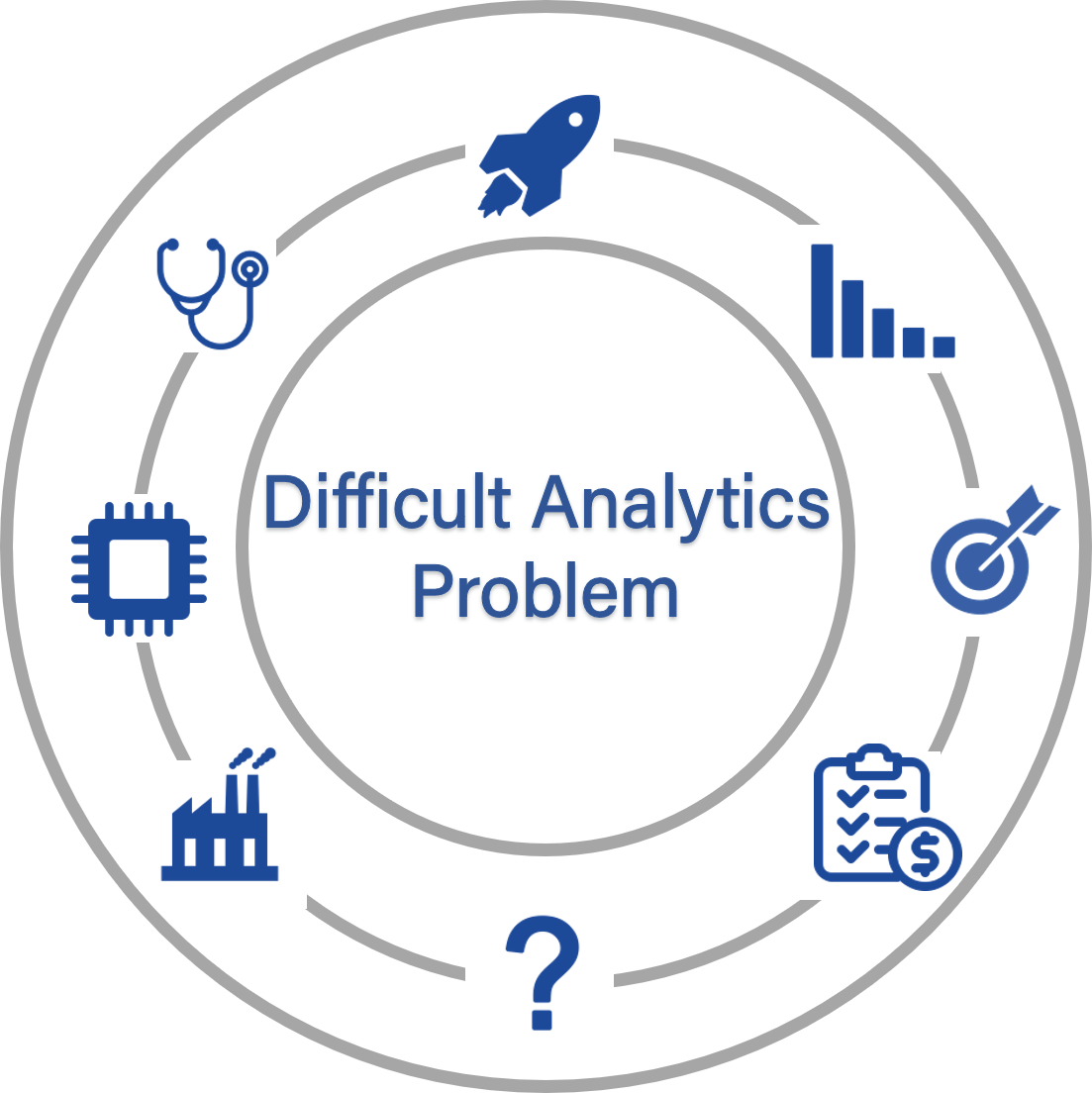As leading companies implement Industry 4.0 processes, engineers must rapidly change the way they use data in design, testing, and manufacturing in order to stay competitive while meeting increasingly strict requirements from customers and regulators like the DoD, DOE, FAA, and FDA. By implementing Industry 4.0, companies can move faster, reduce design iterations, and shorten time to market for new products. Such a digital transformation means more reliance on simulation, more complex and thorough physical tests, adoption of cutting-edge manufacturing technologies like 3-D printing, and digital twins/digital thread.
While these changes promise to revolutionize engineering by generating and collecting a constant stream of information, getting data is only the first step in understanding what it means. Making sense of data through the entire product life cycle (e.g., design, manufacturing, sustainment) requires dealing with larger data sets, analyzing more input factors, and combining data from widely varying sources. These challenges only grow with the size and complexity of the engineering analysis and can prevent engineering teams from making full use of the data available. Even when handling single components or subsystems, the need for powerful analytics tools designed for the scale and nature of engineering applications quickly becomes obvious.
Built from the ground up, SmartUQ was invented to solve large-scale Uncertainty Quantification (UQ) challenges for a jet engine manufacturer because their previous tools could not handle the complexity, scale, and high-dimensionality of their analytics problems. With the building blocks of UQ and SmartUQ’s advanced statistical and machine learning algorithms, we developed a comprehensive engineering analytics tool capable of solving difficult problems throughout the industry. Since then, SmartUQ has been used in industries ranging from medical devices to heavy-duty engines, and SmartUQ’s tool development and expansion has been driven by our customer’s challenges in improving the efficiency, speed, and accuracy of their testing and simulation efforts.

Designed for modern engineering applications

High performance even on desktop computers

Solve challenges previous tools cannot handle

Reap the benefits of an end-to-end solution with SmartUQ’s workflow
From initial design to telemetry analysis, SmartUQ helps our Fortune 500 customers reduce the time, cost, and risk of solving complex data and engineering problems. With an application agnostic toolset, SmartUQ’s versality allows our users to find solutions to their most complicated problems from physical and simulation modeling to new technologies such as Digital Twin – Digital Engineering environment. With problems big or small, below are some of the many ways SmartUQ’s software helps our customers achieve a competitive advantage.









SmartUQ is the first commercial software for industrial-scale Uncertainty Quantification (UQ) analytics designed to bring real-world variability and probabilistic behavior problem solving to engineering and systems analysis workflows. Our advanced statistical and machine learning algorithms are optimally built for modern engineering problems, and can handle larger and more complex systems than previous techniques. This provides a foundation on which we have developed new tools and implemented advanced analysis types that were previously inaccessible due to the cost of performing a large number of simulation or test runs and processing complex data.
Data may be complex for a number of reasons:
Analyses of these data sets using past data analytics methods is not always possible or may lead to undesirable results. Built for jet engine analysis, SmartUQ can handle complex data including large data sets, high dimensional data sets, and complex outputs.

With advancements in and the rapid proliferation of modeling and simulation, physical testing instrumentation, and digital measuring devices such as Digital Twins, engineers have been given a “data rich” environment that can become overwhelming if not properly handled. SmartUQ has developed an innovative data collection machine to reduce the computational burden of large data sets. Additionally, SmartUQ’s prediction machine has emulators developed to quickly and accurately build models from large data sets.

As simulation, monitoring, and testing techniques become more sophisticated and produce increasing quantities of data, some data sets can have hundreds or more inputs from design parameters, initial and boundary conditions, geometries, subsystems, and environmental variables. SmartUQ’s advanced statistical and machine learning algorithms were developed to reduce the cost of handling high dimensionality while maintaining a significant level of accuracy.

With data coming from multiple sources in modern engineering applications, they can contain continuous and categorical outputs or have spatial-temporal responses. SmartUQ’s prediction machine can handle many forms of complex data for predictions, design exploration, and analytics. For spatial-temporal data, SmartUQ can return a dynamic spatial representation showing how the component changes over time. From building functional emulators to model engine transients to mixing continuous and categorical data from different engine or vehicle operating modes, SmartUQ has engineer-ready tools.